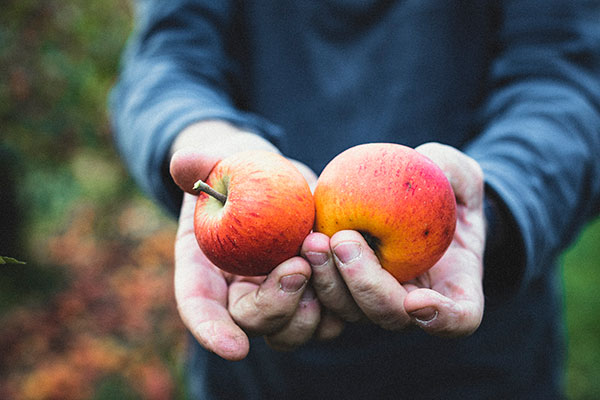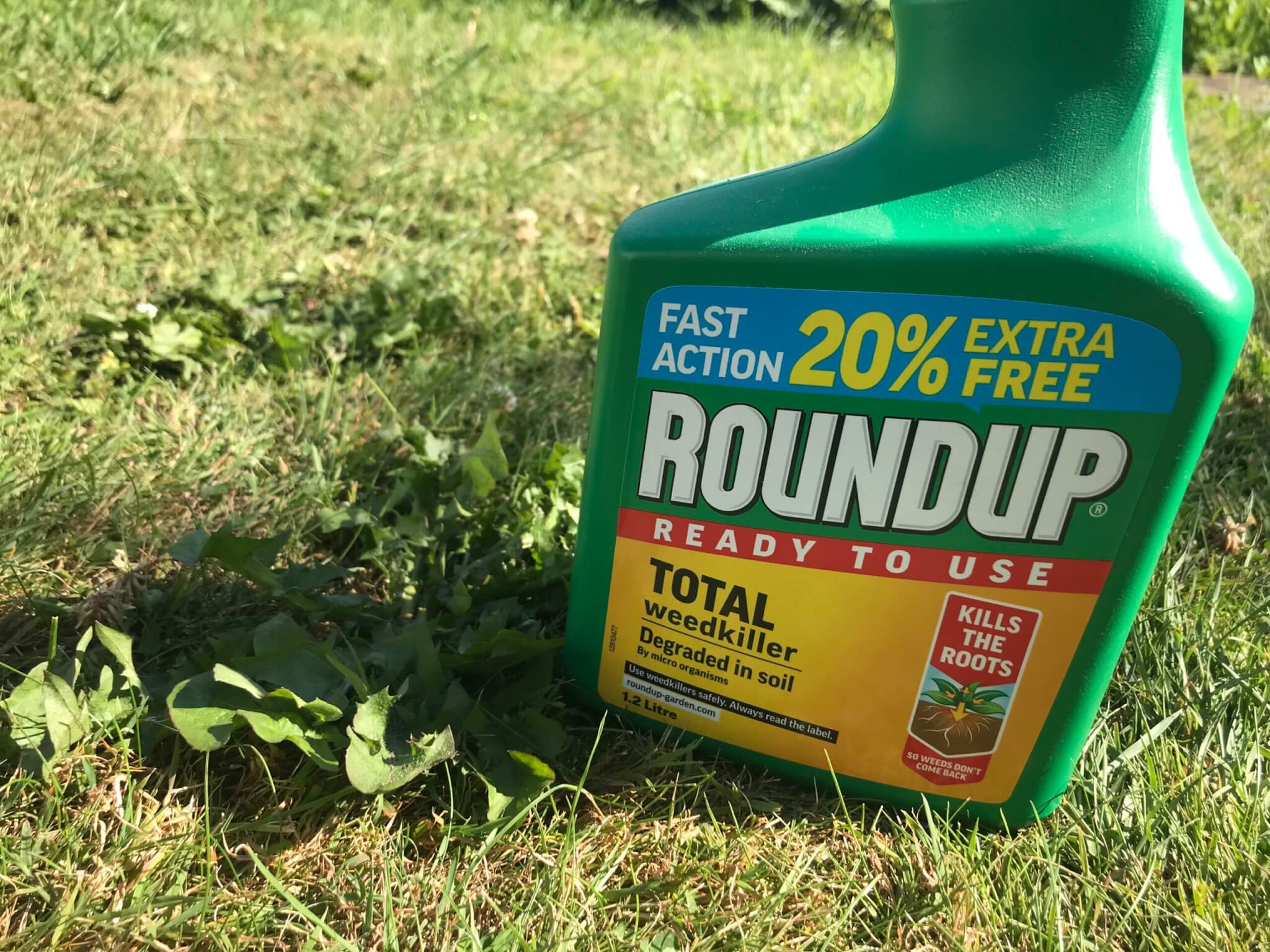“Mild winter brings British asparagus to shops eight weeks early,” was the headline in a national newspaper at the end of February.
While the start of such an iconic seasonal favourite is usually cause for celebration, something being harvested so far out of season is nowadays just another concerning sign of climate change – like seeing daffodils just after Christmas, or the first cherry blossoms falling in early February.
But are the seasons changing that dramatically? And in an age when we’re told to ‘eat seasonal’ as a shortcut to sustainability, is doing so even possible amid increasing climate disruption?
The grower responsible for that super early asparagus had actually spent years developing an intricate warming system for the asparagus beds, covering them with coir (coconut fibre) which heats up quickly, and growing them under cover in tunnels. Nevertheless, even he pointed to the “unseasonal temperatures” of last winter, noting that in the sun, the air in the tunnels reached a toasty, and not at all wintry, 25 degrees.
It’s a pattern that was noticed by Elise Wach, as part of her research for a report looking into the effect of climate change on fruit and veg growers in the South West.
“It’s a combination of new weather patterns and more unpredictability,” she says, of the changes the UK climate is likely to undergo. “Broadly, we will see warmer, wetter winters and hotter, drier summers. That’s the pattern. Spring and summer are becoming more unpredictable. On top of that there are also really odd years, with more likelihood of extreme rainfall or drought. That has already changed and will continue to change.
“There is some shift in [seasonality], as the spring crops are shifting earlier. And the summer crops can finish earlier because they are bolting,” she says, talking about leafy greens like spinach or salad. “We might also see earlier purple sprouting broccoli, for example. But I would caution against saying seasonality has gone out of the window. It’s shifting but it’s not that dramatic, and it depends on the year.”

So there’s no harm in looking forward to the new season Jersey Royals or summer strawberries just yet. But while a supermarket supply chain might smooth out all the obstacles and make it seem like there is always something at its absolute peak, behind the scenes it is a different story.
“What definitely has changed is the amount of rain that falls at any given time. When we get heat, it’s very hot, and when it’s raining, there’s a lot of rain. We also don’t get much of a winter,” says Joe Rolfe, an organic carrot and root veg grower in Norfolk.
“The year before last was so hot and dry, the crop was baking in the ground. We barely got anything. A soil probe was showing about 50 degrees in the soil, so it was basically baking the seed.”
Rolfe says he copes with this by farming with his teams “in short bursts”, ready to take advantage and work efficiently in any weather window. He also buys from growers across the country, including Scotland, to counter any localised weather disruption; something that’s becoming increasingly important.
In her report, Wach found that looking further ahead to how new weather patterns will start to play out yielded yet more changes. “The most significant finding for me was the risk to some crops that are quintessentially South Western: so apples, cauliflowers and broccoli. I hadn’t quite clocked that,” she says.
“To imagine there might be a time when you can’t grow apples in this part of the country is quite mad – they will grow, but there won’t be significant production.”
So-called topfruit (apples and pears) needs a certain amount of ‘chilling’ and low temperatures in the winter. Without that, the timing of flower opening changes and doesn’t correspond with when pollinators are active, and so fruit yield is lower.

“Looking at the projections of warmer winters, that’s the main issue,” explains Wach. There will also be opportunities for new crops, like apricots and grapes, to grow in England’s new-found climates – but despite new growing potential, the biggest challenges will be the impact on what we already grow, particularly around managing water or new pests.
Another quintessential winter veg, cauliflower, and its brassica cousins like broccoli, have already been affected. “Calabrese broccoli is a tricky one; it’s almost impossible to grow now for summer because of hot, dry periods and erratic wet weather in autumn causing quality issues,” says Hannah Croft, crop supervisor at organic veg box company Riverford, who says in terms of timing, anything in spring is now difficult.
Of course, it’s not just British growers whose crops are being affected by climate – far from it. A major supplier to the UK at this time of year is Spain, currently experiencing a record drought and an irrigation ban across the country. Rather than it being a question of what’s in season when, in the south of Spain it may soon become a question of what will grow at all, or at least what will be the cost of countering these extremes.
“When you have a drought, it’s not just about watering more now, it’s about having a different water collection system in place and choosing what kind of pump to get for a bore hole, considering how far the water table might drop in the future. But that’s a huge investment,” says Wach, highlighting the indirect cost implications for growers trying to plan around climate change. “It’s not something that can be mitigated in one season – these are substantial long-term investments.”

Growers doing things in an ecological way are already better placed for climate resilience, she continues, as healthy soil retains more moisture, and healthy biodiversity supports the whole ecosystem. Extending the season and protecting your own supply of fruit and veg in a sustainable way can also be done in the home – Wach suggests freezing or drying fruit that grows locally as a good way to preserve it throughout the winter.
So what does all this mean for people hoping, and wanting, to eat seasonal? Ultimately, it will be increasingly useful to understand the challenges faced by anyone trying to grow food now and in the future.
As Wach puts it: “It seems like it will be more noticeable for growers than it will be for consumers, and the knock-on effect on us will be to eat more flexibly, be aware of what’s available and eat that rather than searching for something else.”
Seasonality and flavour
While seasonality has come to mean when something is simply available, it can also mean when something is at its best in terms of flavour.
For carrots, which can almost be supplied 52 weeks a year, thanks to storage techniques, and fertilisers used by non-organic growers to keep plants healthy, the times when the crop naturally yields are still when they are at their most flavoursome.
In some ways, an organic growing cycle is closer to this annual pattern of seasonality according to flavour, as growers don’t use fertiliser so are more closely tied to soil temperatures and natural weather cycles. “In terms of seasonality, products that are young in age will always taste the best in my opinion,” says carrot grower Joe Rolfe.
“New season in Norfolk is August-September, and it’s not always the season you think about eating veg. On the plus side, the products we grow lend themselves to salads and BBQs.
“You look at brassicas, which grow above ground and are perishable, they grow really well in summer – but no one really eats cauliflower in summer,” he adds.
This article was originally published in the spring print edition of Wicked Leeks. You can read the full magazine for free on Issuu.










0 Comments